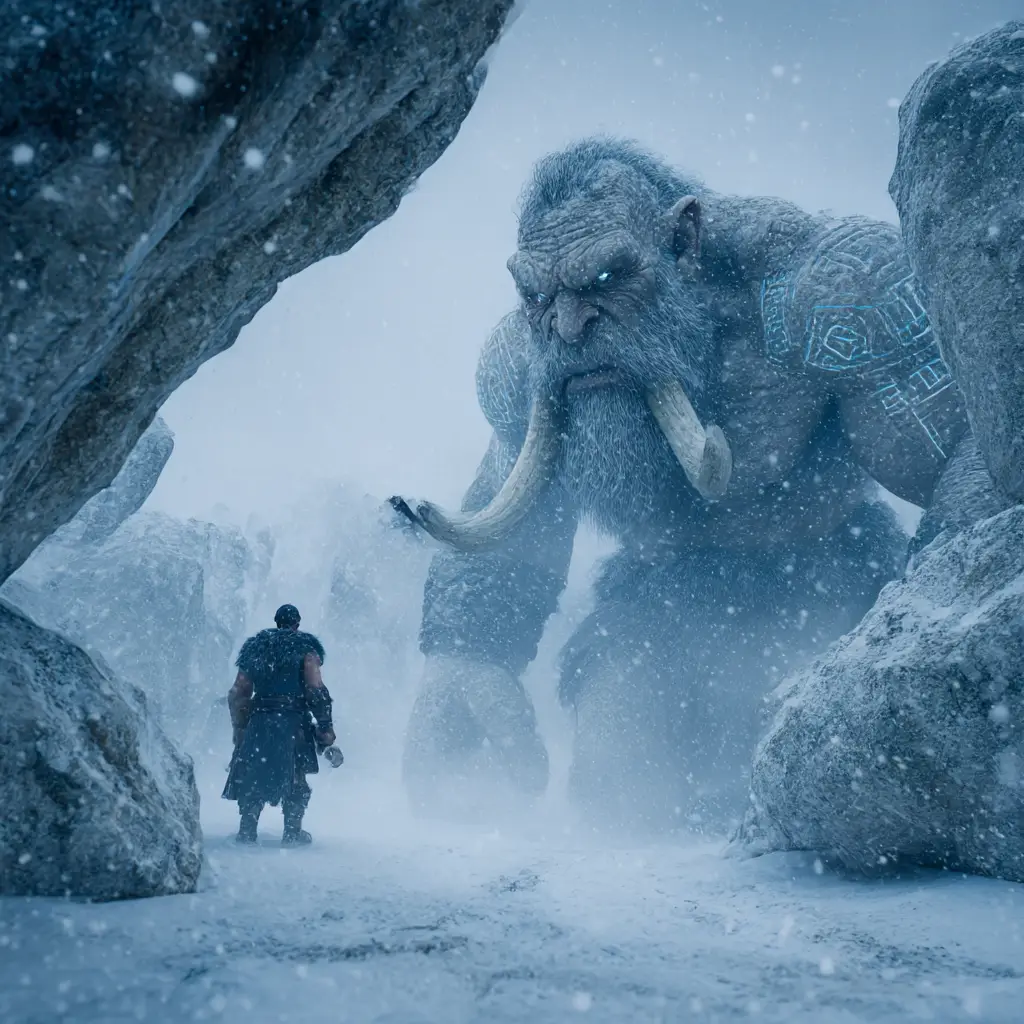Hrimgrimnir – The Frosted Terror of Norse Mythology
Hrimgrimnir is a lesser-known figure in Norse mythology, mentioned briefly in ancient sources but surrounded by an aura of menace and mystery. His name translates roughly to “Frost-Masked” or “Frost-Grim,” combining the Old Norse words hrím meaning frost or rime, and grimnir meaning masked, hooded, or fierce. He is often described as a troll or jötunn associated with the icy realms beyond the lands of men, a being of ancient frost and shadow dwelling on the fringes of creation.
In the Eddaic poems, Hrimgrimnir is mentioned in Skírnismál, one of the mythic poems of the Poetic Edda. In this text, the god Freyr sends his servant Skírnir to woo the giantess Gerðr. When she refuses Freyr’s advances, Skírnir threatens her with a series of curses and dark fates. One of those threats is that she would be condemned to dwell with Hrimgrimnir in the realm of the dead, a place of cold, horror, and eternal night. This brief reference paints Hrimgrimnir as a symbol of dread and punishment, a monstrous presence waiting in the shadows of the underworld.
While not much is written directly about Hrimgrimnir, scholars interpret him as a representation of the fearsome power of nature and the supernatural world. He embodies the ancient Norse fear of the frozen wilderness and the loneliness of exile. Trolls and frost giants in Norse belief often blurred the lines between natural and supernatural, existing both as physical beings and as forces of destruction or chaos. Hrimgrimnir fits within this tradition as a being that personifies the lethal cold and isolation of the far north.
Character and Symbolism
Hrimgrimnir stands as a personification of the merciless aspects of winter and death. His name alone evokes an image of a being covered in frost, grim-faced and ancient, living among the glaciers and frozen caverns of Jötunheim. In symbolic terms, he represents despair, coldness, and the loss of warmth and vitality. The fact that he is mentioned as a curse, as a fate worse than death, gives him an almost mythic status as an embodiment of punishment and horror.
In Norse culture, trolls and jötnar were not always evil, but they were dangerous and unpredictable. They were tied to the primal elements of nature and the raw power of the world before the gods shaped it. Hrimgrimnir may have been one of these beings, existing as an ancient frost giant, older than the gods themselves. His domain could be imagined as an endless expanse of rime-covered rock and ice where no fire burns and no life endures.
Interpretations in Modern Context
Modern readers and mythologists often view Hrimgrimnir as an archetype rather than a fully developed character. His limited mention allows for creative interpretation. He has become a symbol for the unknown horrors that lie at the edge of human understanding, the embodiment of a punishment that strips away warmth, light, and hope. In literature and art inspired by Norse myth, Hrimgrimnir is sometimes reimagined as a warden of the frozen dead or a spectral figure that haunts those lost in winter storms.



